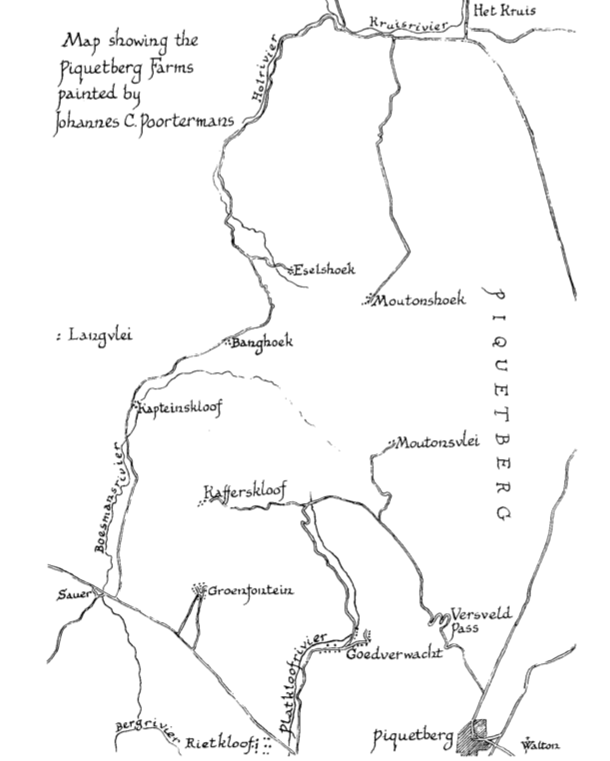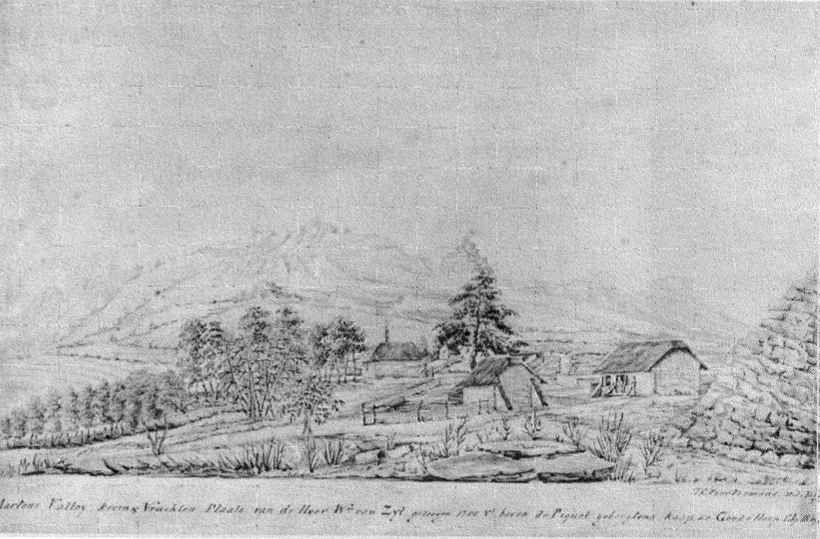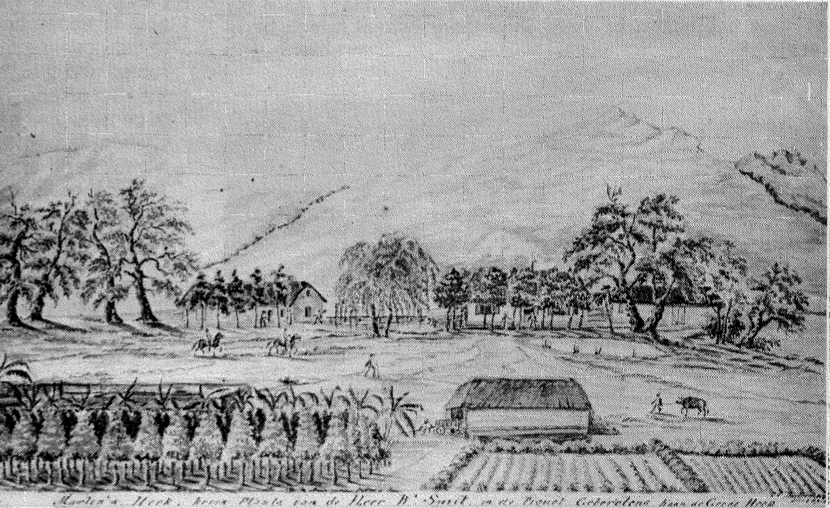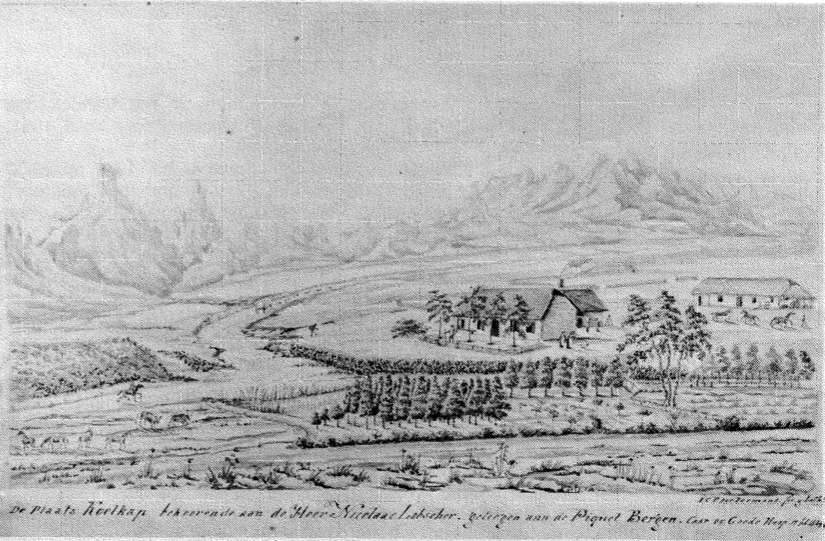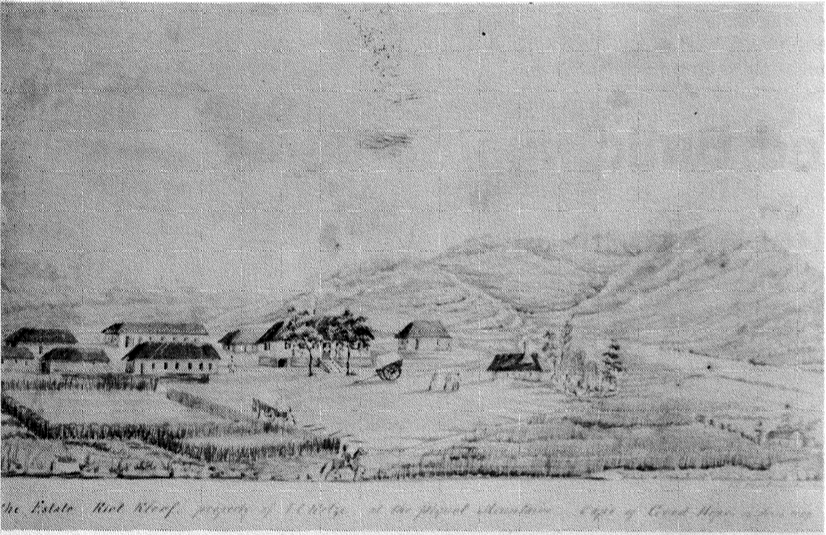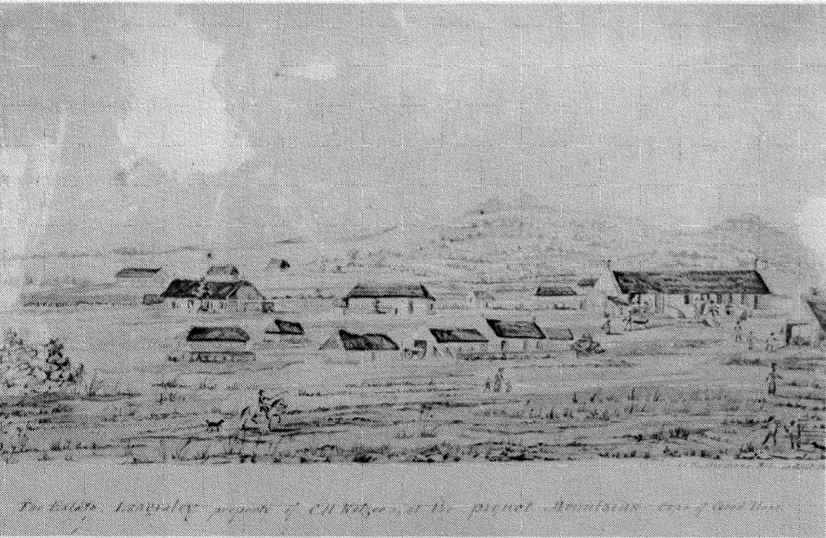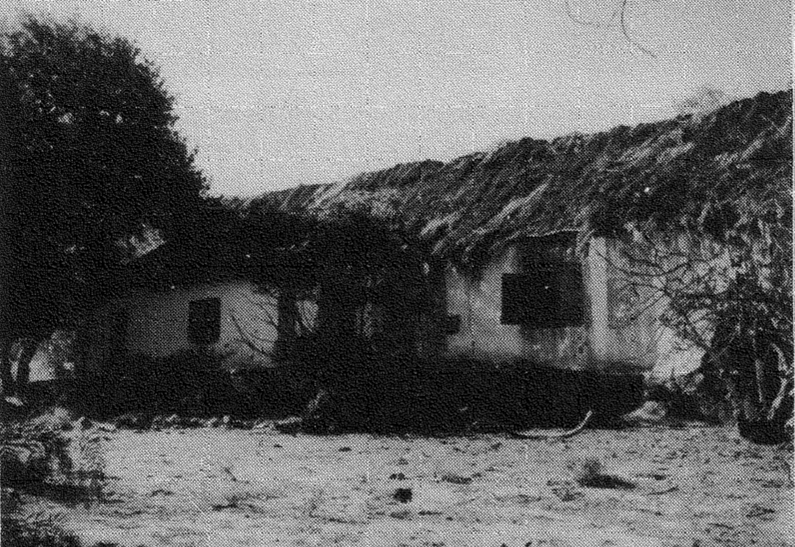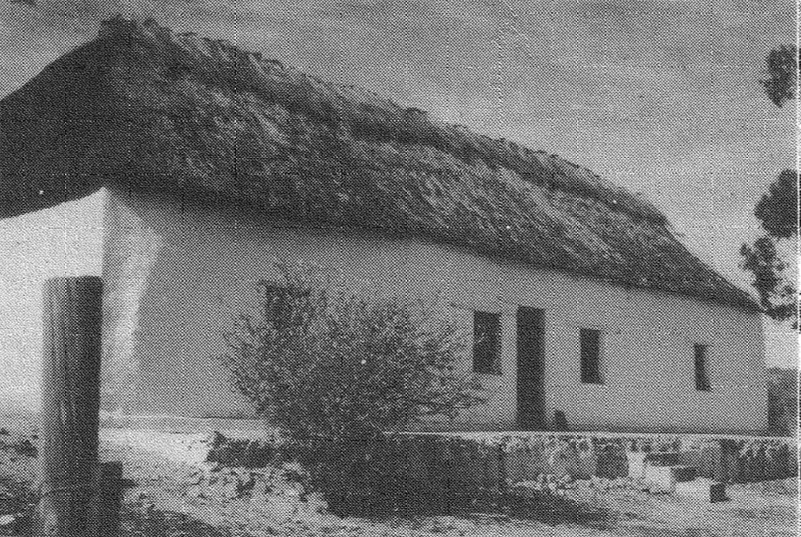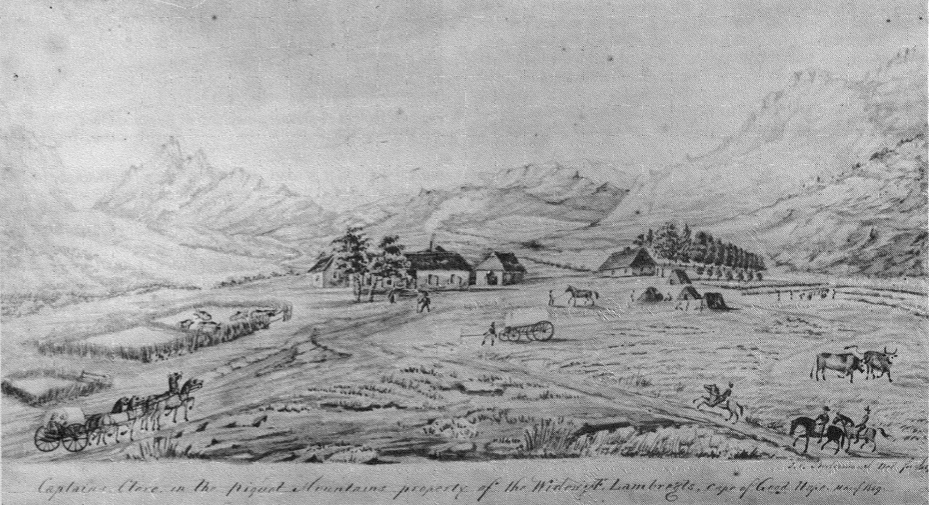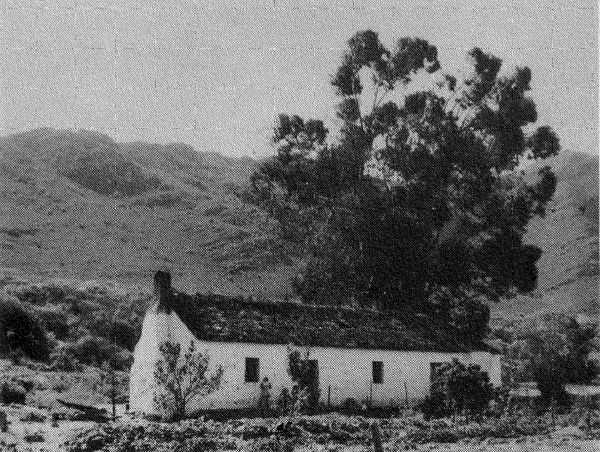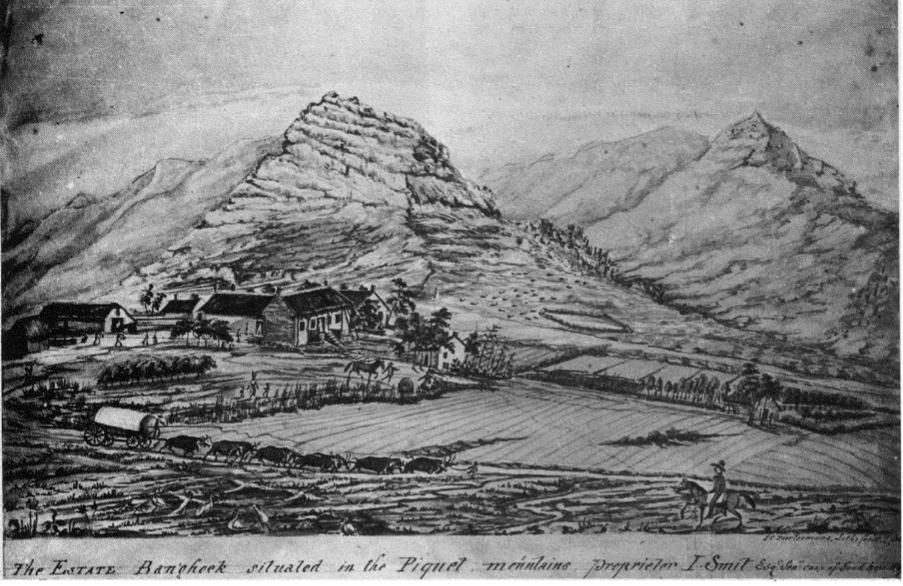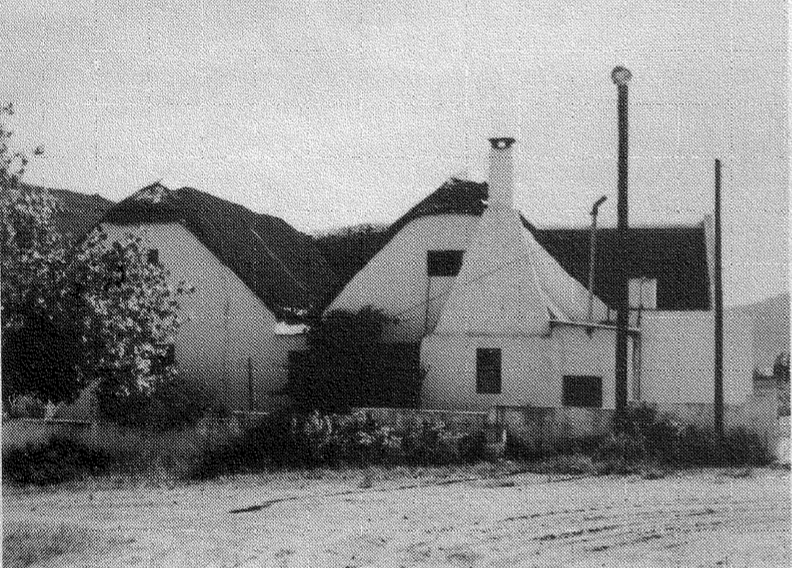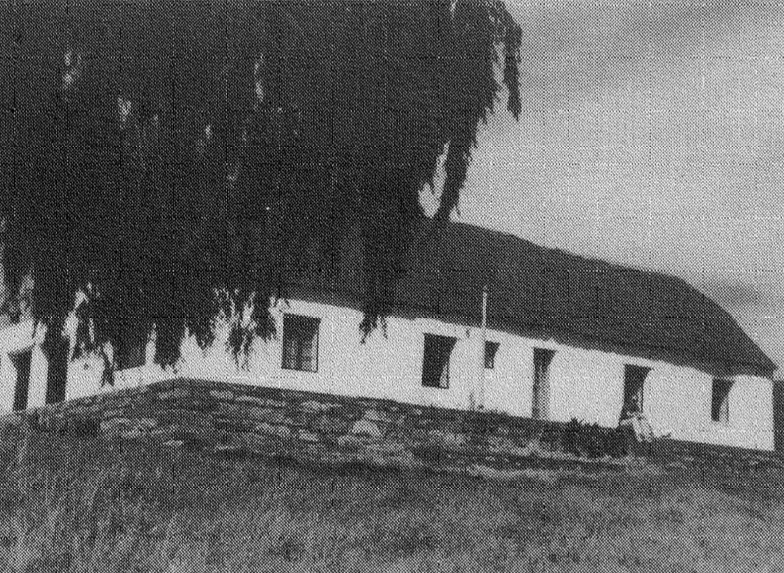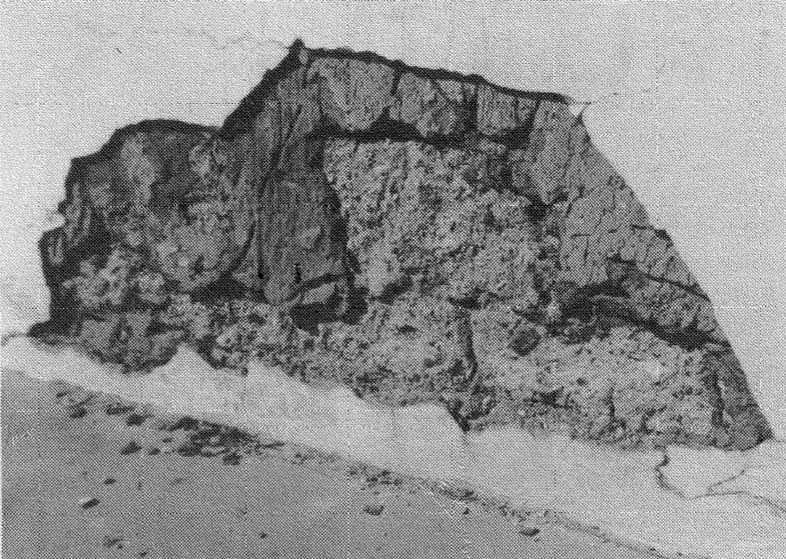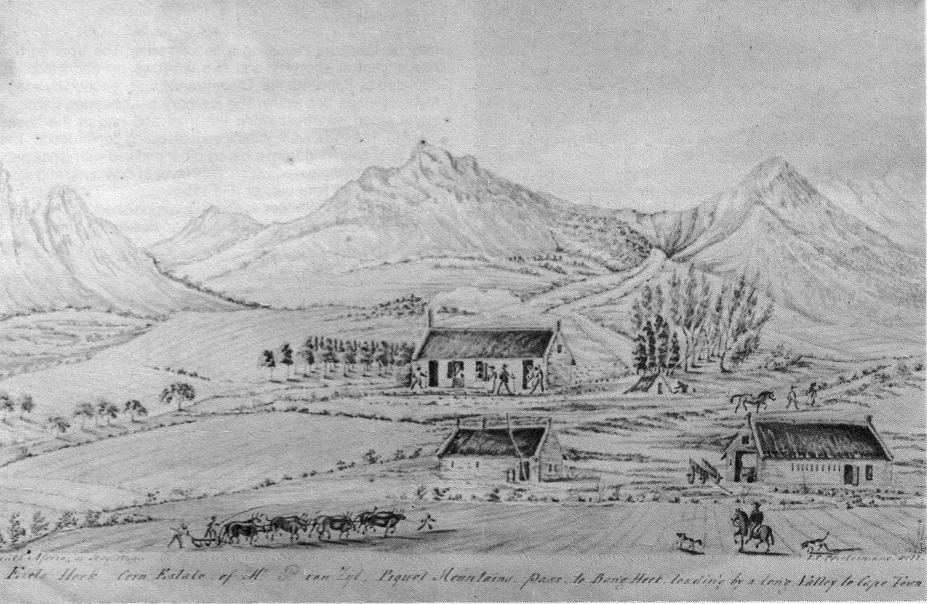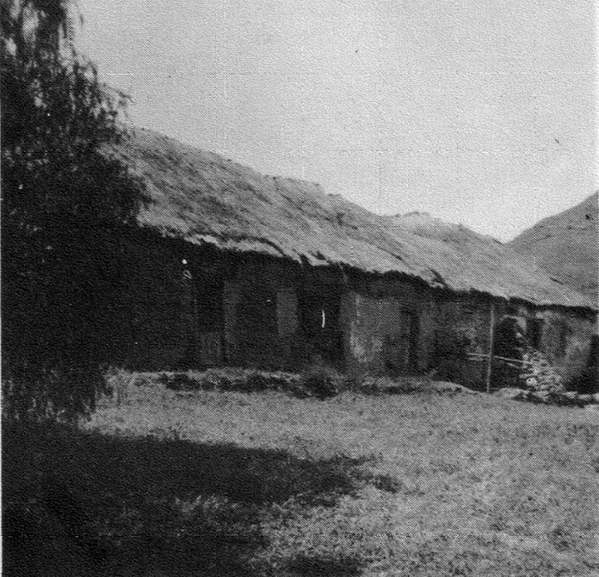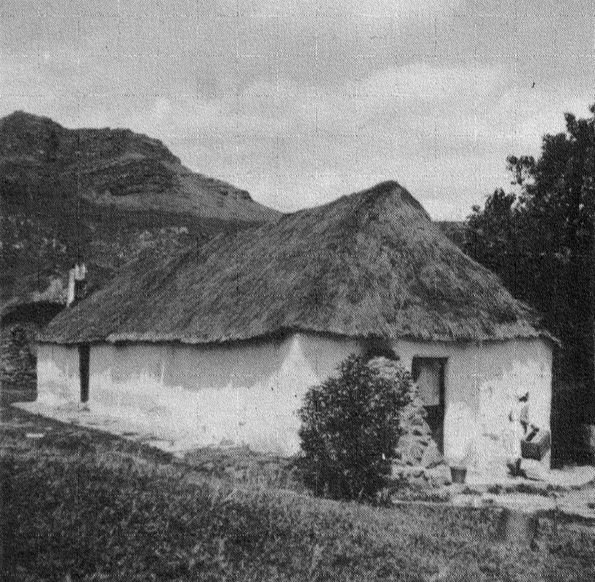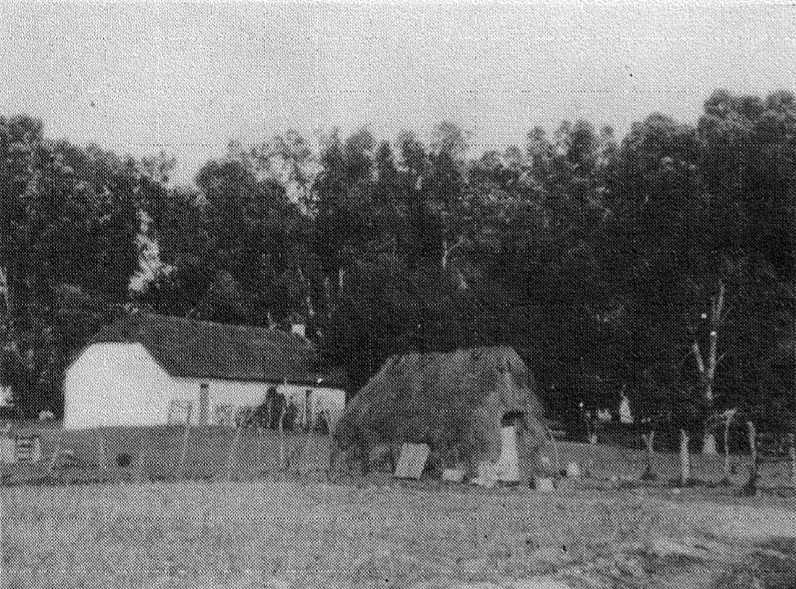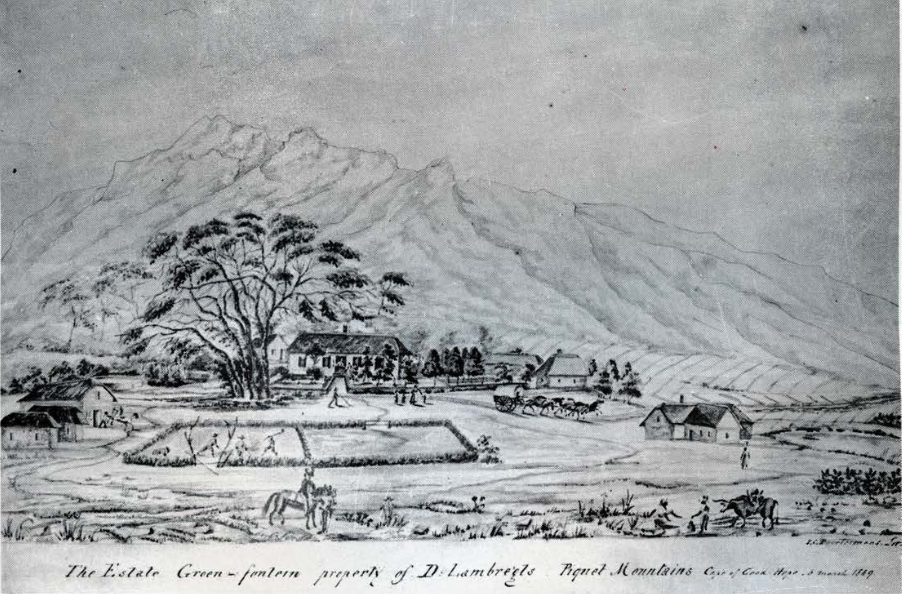
Disclaimer: Any views expressed by individuals and organisations are their own and do not in any way represent the views of The Heritage Portal. If you find any mistakes or historical inaccuracies, please contact the editor.
In the wonderful article below, James Walton traces the journey of Johannes Cornelius Poortermans through the Piquetberg. The piece first appeared in the October 1982 edition of Restorica, the journal of the Simon van der Stel Foundation (today the Heritage Association of South Africa). Thank you to the University of Pretoria (copyright holders) for giving us permission to publish).
Johannes Cornelius Poortermans was a painter and lithographer who lived at the Cape from 1833 until his death at Paarl in 1870. His life and work have been fully described in several publications and many of his paintings and lithographs have been frequently reproduced, especially his Cape Town street scenes and his illustrations of country churches.
He spent a large part of 1848 in Saldanha Bay, painting the farms and other buildings in the bay, and on his painting of Philips Kraal he wrote, 'I spent two years in this healthy region'. The two years were 1848 and 1849, but in 1849 he concentrated on the farms in the Piquetberg and his paintings afford a record of the vernacular architecture of an area which probably has no parallel anywhere else in the country. The value of his paintings depends, however, on their authenticity, and in 1965 I visited the various farms which he illustrated in order to ascertain if any of the buildings which he painted had survived, hoping thereby to verify the accuracy of his records. Several study tours were made subsequently.
Map of farms painted by Poortermans (Restorica 1982)
The farms which he painted were Groenfontein (main image), Kapteinskloof (Kaptains Clove), Banghoek, Eselshoek, Moutonsvlei (Marton's Valley), Moutonshoek (Marton's Hoek), Koelkap, Rietkloof and Langvlei (Langvalei). The first seven paintings are preserved in the Africana Museum, Johannesburg, and the last two are in the Merensky Library, Pretoria. Apart from the paintings of Eselshoek and Kapteinskloof, which I reproduced in Homesteads and Villages of South Africa so far as I am aware, they have not been published previously.
Moutonsvlei. 'Martons Valley, Koorn & Vruchten Plaats van de Heer Wm van Zyl, geleegen 1200vt boven de Piquet geberg· tens.' J.C. Poortermans 1 April 1849 Africana Museum 6360
Moutonshoek. 'Marton's Hoek, Koorn Plaats van de Heer Wm Smit, in de Piquet Gebergtens.' J.C. Poortermans 1 April 1849 Africana Museum 6363
Koelkap. 'De Plaats Koelkap behoorende aan de Nicolaas Lobscher, geleegen aan de Piquet Bergen.' J. C. Poortermans 17 February 1849 Africana Museum 6364
Rietkloof. 'The Estate Riet Kloof. Property of I.C. Kotze, at the Piquet Mountains.' J. C. Poortermans 24 March 1849 Merensky Library
Langvlei. 'The Estate Langvaley. Property of C.H. Kotzee, at the Piquet Moun- tains.' J.C. Poortermans 20 September 1849 Merensky Library
Large tracts of the Piquetberg were granted as loan-places between 1720 and 1730 and three of the places which Poortermans illustrated, Kapteinskloof (Kapiteyns Kloof), Groenfontein (Groene Fonteyn) and Rietkloof, are marked on the Abbe de la Caille's map which he compiled in 1751-2. Groenfontein was an early loan-place and it continued as such until 21 November 1831, when it was granted as a perpetual quitrent holding to Hugo Lambrechts, grandson of Amos Lambrechts of Leiden, who died in 1728.
When Poortermans drew the farm on 6 March 1849 it was apparently quite an extensive estate owned by D. Lambrechts. lt had a main dwelling-house consisting of a front block with a central voorhuis, flanked by a bedroom on each side. The doorway was closed by a bo-en-onder door and the voorhuis was illuminated by a single shuttered casement on each side of the entrance. Each bedroom had a double shuttered window. Judging from the position of the chimney, the house had a 丄-plan with the kitchen occupying the central wing, thus conforming to the typical Cape 丄-plan. This dwelling survived until 1965, when I photographed it, although it was then unoccupied and falling into ruin. After it was painted by Poortermans buitekamers were added at each end but the central part remained as shown by Poortermans. Nearby a 丄-plan house had been built which was almost a replica of the original homestead and is a delightful example of Piquetberg vernacular architecture. The dwelling was fronted by a garden, the boundary wall of which can still be traced, and the pathway from the entrance led to a cattle kraal and a threshing floor. Around the kraal were a number of quite substantial buildings, exhibiting a variety of styles, all of which, however, can still be found in the Piquetberg. Most of them were simple rectangular structures with hipped or half-hipped thatched roofs and entrances in the gable end. One was quite a large 丄-plan dwelling. None of these outbuildings has survived but older residents on the farm can still remember some of them, which conformed to the painting.
Remains of the main Groenfontein dwelling 1965. Buite kamers added later at each end. (James Walton)
Groenfontein, Piquetberg 1965. The front of a 丄-plan house, built as a replica of the original Groenfontein dwelling. Note the lintels and the ridge-capping of bundles of thatching-grass pulled up by the roots and placed roots uppermost. (James Walton)
When Groenfontein was granted as a quitrent holding it was 3 323 morgen in extent but in 1917 it was subdivided and the part known as Kafferskloof was owned by H.L. Brink. After about three years it was transferred to the Lambrechts, in which family it has remained until the present day. Although this was not illustrated by Poortermans, Kafferskloof is of particular interest on account of its outbuildings, which constitute an architectural style not found elsewhere in the Piquetberg. These buildings, which serve as tobacco-drying sheds, cartsheds and occasional bedrooms, are falling into ruin and photographs of them are included here as a record of an unique vernacular architecture.
Kafferskloof Piquetberg 1974 (James Walton)
They have low rubble walls covered with massive thatched roofs which are usually hipped, although one building has rubble gables. The most striking feature of all these buildings is the deep eyebrow in which the thatch is swept over the entrance, giving the buildings their peculiar character. Such a treatment of the thatch is not evident on any of Poortermans's paintings nor have I found it on any other Piquetberg buildings, and it is very unfortunate that this very attractive complex could not have been preserved in its entirety, although a replica of one has been erected in the Worcester Open-air Museum.
The Piquetberg is traversed from south to north by a very old road, starting at Sauer and following the Boesmansrivier through Kapteinskloof to Banghoek and then over a pass to the Holrivier, which it follows to Het Kruis, formerly an important stopping-place on the road to the north. Many old farmsteads are sited along this road, which Poortermans obviously traversed for he painted three of them; Kapteinskloof, Banghoek and Eselshoek.
Kapteinskloof is a picturesque settlement situated on the north side of Klipdrif, where the road crossed the Boesmansrivier. The Poortermans painting shows a 丄-plan dwelling with the kitchen occupying the rear wing. The front portion, which has a hipped thatched roof, presents a symmetrical facade, having a central doorway and two shuttered window openings on each side. Three farm buildings and four roof-shelters are also depicted. An old thatched 丄-plan house still stands and on the opposite side of the road is a later typical Piquetberg dwelling.
Kapteinskloof. Captains clove in the Piquet Mountains, property of the Widow F. Lambregts. J.C. Poortermans Africana Museum 6362
Typical Piquetberg dwelling at Kapteinskloof 1981 (James Walton)
The next farm along the road which Poortermans painted was Banghoek, which is of particular interest because, although considerably 'modernized', the buildings shown on his painting are still standing or are still remembered by a resident, Nicodemus Johannes Faroe, who was born on the farm over sixty years ago. Banghoek is sometimes referred to as Boschkloof and under that name on 15 March 1781 it was granted as a loan-place 'for only one year' to Johannes Lubbe. On 15 June 1821 it was granted as a quitrent holding to Johannes Henricus Fischer, from whom it was transferred in 1832 to Jan Nicolaas Smit (1776-1859), second son of Erasmus Smit (Schmidt) of Holstein. The existing buildings were probably erected, therefore, between 1821 and the time of Poortermans's visit in 1849. Jan Nicolaas Smit died on 15 December 1859, and on 18 July 1879 the farm was bought by his son-in-law, Dirk Jacobus Kotze, who had married Madge Maria Smit. On his death it passed to his two daughters and so into the Burger family.
The Estate Banghoek, situated in the Piquet mountains, Proprietor I. Smit Esq. 1849. J.C. Poortermans Africana Museum 6359
The house today has a ㅛ-plan and in 1849 it already had one rear wing, and possibly two, if the smoking chimney may be taken as indicating a second wing. The front portion has a central doorway and two windows on each side, as depicted by Poortermans. The entrance was reached by a high flight of steps but, within the memory of Johannes Faroe, a stone stoep was built along the front and end of the house. The thick walls exhibit an interesting construction. The core is of clay, dug from a neaby pit and mixed with small pebbles. This was smeared with a thick layer of cow dung and sand and faced with lime plaster.
Rear view of Banghoek 1981 (James Walton)
Front of Banghoek 1981 (James Walton)
Banghoek. Detail of wall construction 1981 (James Walton)
To the left of the house is shown a wagon-shed, whose walls, 55 cm thick, still stand, and at right-angles to the shed was a smaller building, since demolished, which served as a tobacco-drying shed. Between the house and the wagon-shed, although lower down the slope, can be seen a smaller dwelling which is now used as a farm building. In front of the main house was a building, which survived until well into this century and which Johannes Faroe remembers as a watermill operated by Theunis Kotze.
Over the pass north of Banghoek lies the farm Eselshoek, which Poortermans described as the 'Corn Estate of Mr P. van Zyl. Piquet Mountains. Pass to Bang Hoek, leading by a long Valley to Cape Town'. The Poortermans painting depicts two dwellings and a wagonshed. What appears to be the principal dwelling has an entrance near one end of the front and this part is illuminated by two shuttered windows. At the opposite end is shown a second doorway, leading to a buitekamer. This building, the walls of which were built up of layers of mud mixed with chopped straw and cow dung, was still in existence in 1965. The windows had been filled in and an extension had been added at one end, as is shown by a break in the thatch, but the building portrayed by Poortermans was still easily recognizable.
Eselshoek. 'Ezels Hoek Corn Estate of Mr P. van Zyl. Piquet Mountains. Pass to Bang Hoek, leading by a long valley to Cape Town.' J.C. Poortermans 15 May 1849. Africana Museum 6377
Eselshoek. The house painted by Poortermans as it appeared in 1965. Windows blocked up and an extension added on the right. Walls built up of layers of clay mixed with chopped straw (James Walton)
A second building at Eselshoek is not shown on the Poortermans painting but it was built shortly afterwards and is typical of many of the Piquetberg buildings which Poortermans recorded. lt is a long rectangular building with a hipped thatched roof and a main entrance in one end. A second doorway affords access to the kitchen at the opposite end.
Eselshoek. A dwelling with gable entrance and a kitchen entrance at the opposite end. Built after Poortermans made his painting but typical of many Piquetberg houses which he illustrated. (James Walton)
On the painting of Eselshoek is a roof-shelter with a gable entrance, and four similar shelters are shown on the painting of Kapteinskloof (Captains Clove). Judging from the number of people standing or sitting in the vicinity of the shelters, it would appear that these housed the Hottentots and Coloureds who worked on the farms. Similar shelters may still be seen on many Piquetberg farms.
A Piquetberg roof shelter similar to those depicted by Poortermans on his paintings. Photographed 1965. (James Walton)
It was not possible to identify the buildings on the other farms which Poortermans painted, as these had been demolished, but the surviving buildings at Groenfontein, Eselshoek and particularly Banghoek indicate that he was accurate within the limits of his draughtmanship. This is confirmed by the many surviving old Piquetberg buildings which exhibit the same characteristics as those portrayed by Poortermans.
Probably because of their isolation, the farmers living on the slopes of the Piquetberg continued to build houses and farm buildings similar to those recorded by Poortermans. Although they present many features in common, they are not uniform in plan or appearance and appear to have developed according to individual requirements. Most of them are simple rectangles roofed with thatch which is hipped at one end and terminated at the kitchen end by a gable to accommodate the chimney-stack. In general they have a basic element of bedroom, voorhuis and kitchen, to which rooms with separate entrances were added as the need arose, thus presenting an asymmetrical facade. They do, however, constitute a typical vernacular architecture, arising from individual needs and built by local labour from such materials as could be easily obtained.
Many farm houses similar to those depicted by Poortermans have survived in the Piquetberg, notably those at Stinkfontein (Dreyersvlei) and Kapteinskloof, but a large number are now untenanted and falling into ruin or are being 'modernized' with little regard for their original character. Others are occupied by farm labourers or by old people and little is being done to preserve them. The Poortermans paintings are, therefore, particularly valuable as records of a regional style of architecture which is likely to disappear in a short time.
Comments will load below. If for any reason none appear click here for some troubleshooting tips. If you would like to post a comment and need instructions click here.

